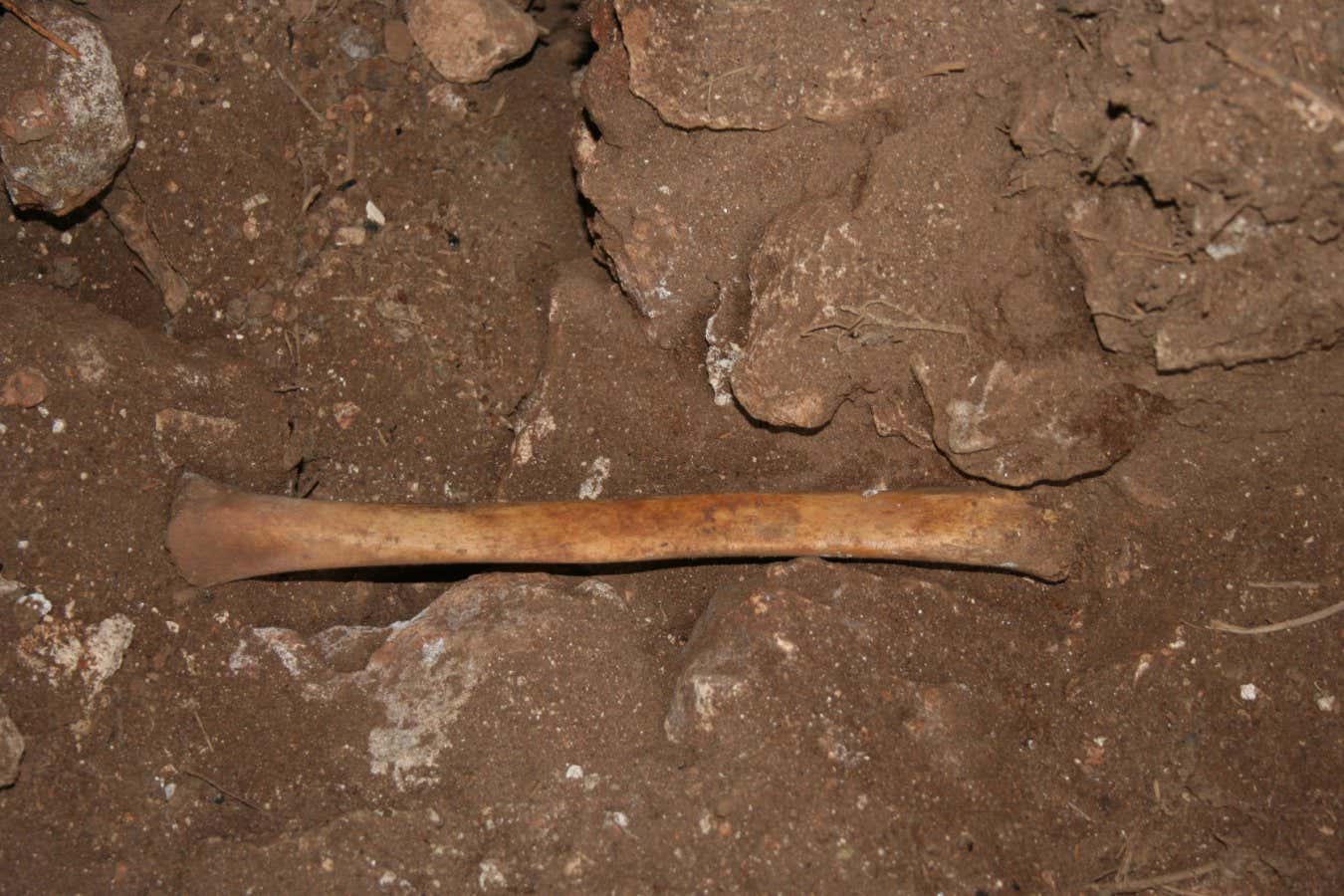The Cueva de los Marmoles cave in Granada, Spain, was used as a prehistoric human burial site. Researchers have found that nearly a third of the bones that remain were altered by tools, possibly to make bowls, cups or spatulas
By Christa Lesté-Lasserre
20 September 2023
A human bone from up to about 5900 years ago found inside the Cueva de los Marmoles cave in Granada, Spain
J.C. Vera Rodríguez, CC-BY 4.0
Prehistoric farmers and herders in southern Spain buried their dead in a large cave – but may have later cut them up to make tools and possibly eat their bone marrow.
Since 1934, scientists, amateur archaeologists and even tomb raiders have been exploring human skeletal remains left in a Granada cave, called Cueva de los Marmoles.
Within the 2500-square-metre cave – which has harboured multiple generations of bodies across three millennia – people have previously found a carefully carved human skull cup, a well-crafted tibia tool and dozens of other bone fragments. New evidence suggests that some remains may have been intentionally broken and scraped up to a year after the individuals died.
Advertisement
The findings indicate that people may have been manipulating the deceased’s bones, after the cadavers had decayed slowly for some time in the cave’s cool, humid environment, says researcher Marco Milella at the University of Bern in Switzerland.
Milella, his co-lead researcher Rafael Martínez Sánchez at the University of Córdoba, Spain, and their colleagues went to the cave to collect further artefacts and investigate them using modern methods, such as advanced carbon dating, and hi-tech microscopic and scanning equipment.
